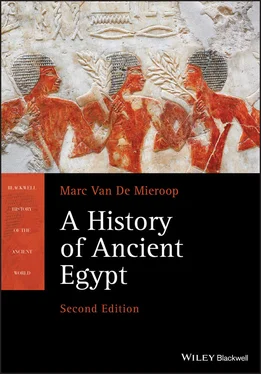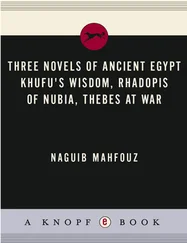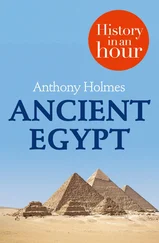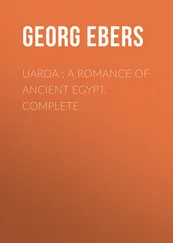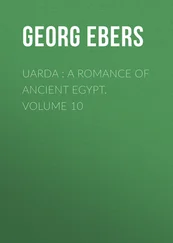1 ...7 8 9 11 12 13 ...28 Because this is an introductory book with limitations to its size, I cannot give every aspect of Egyptian history equal attention and had to make choices about my focus. Political history dominates, and in that history the deeds of leading men are often the focus. I speak a lot about building projects and wars, much less about the daily lives of the people who provided the labor and suffered the consequences of conflict. The textual sources get more attention than the material ones, and in the latter group the impressive remains more than the simple ones. Other histories can be written and have been, but this book follows many others whose focus is dictated by how strongly the evidence we have speaks to us. It serves as an introduction.
As was the case in the first edition, I have to acknowledge that this book, as every other introductory survey, does not argue – it asserts. Even if sentences are qualified by words like “seemingly” (often omitted to avoid clutter in the text), they give the impression that there is certainty. That is far from true. Every page, if not paragraph, probably contains a statement that will offend someone who has argued differently in writing or lectures. It is impossible to acknowledge every scholarly opinion in an introductory book that covers the entirety of ancient Egyptian history. I chose to follow interpretations that I found the most convincing or appealing, and in the Guide to Further Reading gave preference to works that were the most useful in guiding my decisions. Like most of my colleagues, as a teacher I demand from my students that they acknowledge the sources they use when writing a research paper. It may thus seem that I set the wrong example here by not specifically referencing where I found an idea or what scholar’s view I follow. If I had chosen to give full bibliographic references, I would have produced a very different book, longer and probably more daunting to a general reader. But, in order to counteract the impression that what I have written is generally accepted fact, I have included sections called Key Debate in each chapter to survey different views on a specific topic and give more detailed notes with scholarly references. In these sections I often stress how interpretations have evolved because of changing modern preoccupations rather than a clearer understanding. Historians do not live in a vacuum, and their interests and explanations reflect their own conditions. I admit that even in these sections I could not acknowledge all that has been written on a topic; the bibliography is simply too vast.
I have to thank several people for their help and encouragement during the writing of this book. Wiley’s Executive Editor Todd Green urged me to prepare a second edition and made it possible for me to do so, and the copy‐editor, Giles Flitney, expertly removed unclear statements and contradictions from the manuscript. The advice of scholars who helped me during the writing of the first edition – John Baines, Ronald Leprohon, Gay Robins, Thomas Schneider, and Willeke Wendrich – was still very important for the version printed here. Richard Parkinson and Robert Simpson were kind enough to let me reuse their translations of several ancient Egyptian texts. The other textual sources quoted were updated and standardized by Katya Barbash and Robert Simpson for the first edition and repeated here. Richard Parkinson and Barry Kemp allowed me to reproduce images they had created. I want to reiterate my thanks to various groups of Columbia undergraduate students who in successive years have shown an interest in the ancient history of Egypt and have forced me to clarify my thoughts on the subject. Their presence in my lectures has strengthened my belief that the study of ancient Egyptian civilization, one of the greatest in world history, is still a worthwhile enterprise today.
I hope this book will inspire others to explore it too.
Damme
August 2020
Rather make my country’s high pyramides my gibbet and hang me up in chains.
(Shakespeare, Antony and Cleopatra Act 5, scene 2)
The tourist to Egypt who sails up the Nile from Cairo to Aswan gazes upon an abundance of grandiose monuments, often remarkably well preserved despite their enormous antiquity. Many of them are icons of ancient Egypt and have been so for centuries. Shakespeare’s audience recognized the image Cleopatra conjured up when she called the pyramids her gallows. Modern guided tours always include these same pyramids, as well as the great Amun temple at Luxor with the royal tombs across the river, and the much smaller temple of Isis at Philae between the Low and the High Aswan dams. These monuments, spread over hundreds of miles, are all different from what surrounds the traveler at home, alien in their function, their form, and their use of images and writing. They share so many characteristics that it is easy to forget that their builders lived countless years apart. More time passed between the construction of the pyramids at Giza and the building of the Philae temple we now see, than between the latter temple’s inauguration and us.
1.1 What is Ancient Egypt?
Chronological boundaries
It may seem easy to look at something – a monument, coffin, statue, or inscription – and call it ancient Egyptian, but it is not so simple to draw the boundaries of ancient Egypt both in time and space. In the late 4th century AD, the Roman emperor Theodosius issued an edict closing all Egyptian temples and dispersing the priesthood. His act ended the knowledge of Egyptian hieroglyphs, which could no longer be taught. Can we take the withdrawal of official support for ancient Egyptian cults and writing systems as the end of ancient Egypt? Theodosius’s edict only affected a small minority of people that had long been under threat. Ancient Egyptian cultural characteristics had been immersed in a world inspired by Hellenistic, Roman, and Christian ideas for centuries. Certainly in political terms Egypt had lost its separate identity hundreds of years earlier. From the Persian conquest in 525 BC onward, but for brief spells of independence, the land had been subjected to outside control. In native traditions the Persian rulers were still considered part of the long line of Egyptian pharaohs, but their successors were different. Modern historians do not call the Greek and Roman rulers of Egypt pharaohs, although their Egyptian subjects continued to represent them with full pharaonic regalia. Is “Egypt after the pharaohs” no longer part of ancient Egyptian history then? Individual scholars and institutions use different approaches. Some histories of ancient Egypt end with Alexander of Macedon’s conquest in 332 BC, others at the death of Cleopatra in 30 BC, yet others run into the Roman Period up to 395 AD and Theodosius’s reign.
It is always difficult to draw a line after an era in history, as all aspects of life rarely changed simultaneously. More often the change in the sources that modern scholars use determines where they end historical periods. In Egypt’s case the gradual replacement of the traditional Egyptian language and writing systems by the Greek language and script necessitates a different type of scholarship. Most specialists of Egyptian hieroglyphic writing do not easily read Greek sources and vice versa. Although the ancient Egyptian scripts survived after the Greek conquest of the country, there was a constant increase in the use of Greek writing, which turns the modern study of Egypt into a different discipline. Yet, Ptolemaic and Roman Egypt in many respects preserved ancient Egyptian traditions and customs, so I will include a discussion of that period in this survey.
If the disappearance of ancient Egyptian writing in the late 4th century AD heralds the end of the civilization, does its invention around 3000 BC indicate the beginning? No single event announced a new era, but from around 3400 to 3000 BC radical changes that were clearly interrelated took place in Egypt and forged a new society. Those innovations included the invention of writing, a process that lasted many centuries from the earliest experiments around 3250 to the first entire sentence written out around 2750. In the last centuries of the 4th millennium BC the unified Egyptian state arose, and that period can serve as the beginning of Egyptian history despite its vague boundaries. Naturally, what preceded unification – Egyptian prehistory – was not unimportant and contained the germs of many elements of the country’s historical culture. Hence, I will sketch some of the prehistoric developments in this chapter to make the influences clear, but the creation of the state with the coincident invention of writing and other aspects of culture will indicate the start of Egypt’s history here.
Читать дальше
